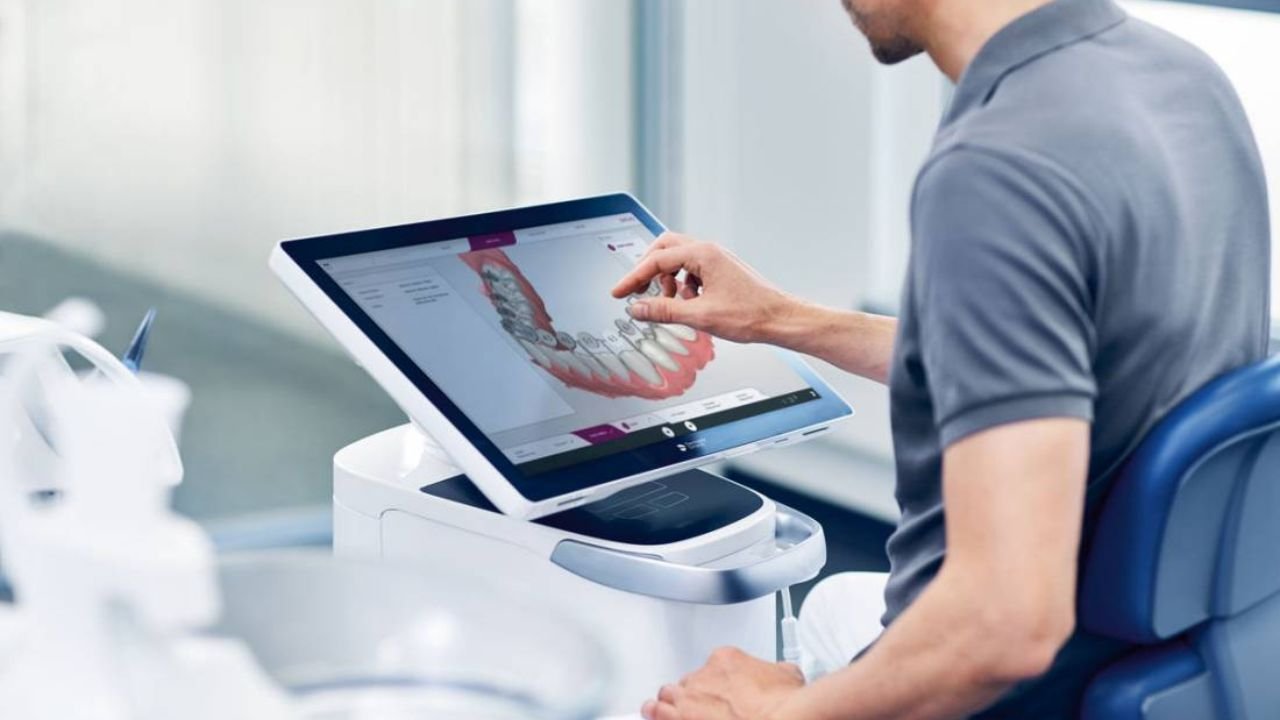Running a dental practice today means staying sharp and ahead of the curve, particularly when it comes to technology. And if you’ve been keeping an eye on the tech, you already know CAD/CAM dentistry is changing everything.
Gone are the days of traditional digital impressions and waiting for days to get your crown or implants delivered. Patients today expect faster results, fewer appointments, and better-looking smiles as quickly as possible.
And guess what? Chairside CAD/CAM restorations are making it happen.
Let’s dive into why this technology is already reshaping dental care.
What Is Chairside CAD/CAM Dentistry?
CAD/CAM technology stands for Computer-Aided Design and Computer-Aided Manufacturing. As a dentist, it lets you create and deliver restorations like crowns, veneers, inlays, and onlays right inside your practice, often within a single visit.
In simple terms, it involves scanning a patient’s teeth, designing the crown or implant, and milling it onsite. You don’t need to send anything to an outside lab. That makes chairside CAD/CAM restorations faster and more accurate and gives your patients what they want — instant results.
Why Chairside CAD/CAM Restorations Are Booming
Today’s patients want everything faster, and that includes their dental work. They don’t want to wait two or three weeks for a crown to come back from a lab. They don’t want to deal with messy impression trays either. They want a smooth, easy, same-day experience, and that’s where chairside CAD/CAM restorations come in.
For dentists, the benefits are just as good. You stay in control of the entire process, from scanning to milling to placing the restoration. You don’t have to rely on labs or worry about shipping delays. You save money by cutting out lab fees and keeping more profits in your practice.
Plus, faster service leads to happier patients, and happy patients tell their friends. This word of mouth can help your practice thrive in the long run. In short, chairside CAD/CAM helps you work smarter, deliver better results, and grow your practice faster than ever.
How CAD/CAM Restorations Work
Many dentists are already using CAD/CAM technology in one way or the other. The process is quite straightforward and typically involves three simple steps:
- Digital Scanning: With the right tech, you don’t need to use gooey trays. For example, an intraoral scanner can capture 3D images of a patient’s teeth with incredible precision. You’ll see the results on your computer screen in seconds, and take another scan if required.
- Design Software: Using CAD/CAM dentistry software, you can design the restoration right there in the office. It can be a crown or a dental implant.
- Milling Unit: Once the design is ready, you can send it to one of the advanced Dental Milling Machines that carve the restoration out of dental CAD/CAM materials, typically a ceramic or composite block — sometimes in less than 15 minutes.
Once milled, you can stain, glaze, and fit it immediately. This whole workflow can easily cut turnaround time from weeks to just a couple of hours.
Dental CAD/CAM Materials Have Already Gotten Better
Dental CAD/CAM materials have gotten way better over the last few years. Early CAD/CAM blocks were basic and not very aesthetic. But now, we’ve stronger, more beautiful options that truly mimic natural teeth.
- Lithium Disilicate
Lithium disilicate is one of the most popular materials for CAD/CAM restorations. It’s super strong and looks very close to natural enamel. Lithium disilicate CAD/CAM crowns have shown 90.7% to 96.6% survival rates over five years.
This material is a top choice for crowns, veneers, and even bridges in the front of the mouth. Dentists love it because it balances beauty with durability. Plus, it bonds well to tooth structure for a long-lasting result.
- Zirconia
Zirconia is one of the toughest dental CAD/CAM materials available. It’s perfect for crowns on back teeth, where biting pressure is highest. Newer zirconia options are also much more natural-looking than older versions. It’s a smart choice when strength matters most without totally giving up on aesthetics.
- Hybrid Ceramics
Hybrid ceramics blend ceramic and resin, giving them a unique mix of strength and flexibility. They are easier to mill and adjust chairside, making them ideal for same-day crowns. Hybrid ceramics absorb biting forces better, helping to protect opposing teeth. They’re a great fit for inlays, onlays, and less invasive restorations. Plus, they polish up beautifully.
- Resin Nanoceramics
Resin nanoceramics are filled with tiny ceramic particles inside a strong resin base. They are lightweight, easy to mill, and very forgiving during placement. Because they polish easily, they can match natural teeth well without a lot of extra work. They’re a solid pick for quick, same-day restorations like small crowns and inlays.
New Advances Shaping the Future
The advances in CAD/CAM technology are just getting started. Here’s what’s around the corner:
- AI-Powered Design
AI is getting smart enough to help automate the design process. Some systems now suggest ideal crown shapes and margins based on millions of scans. That means faster designs and better fits, even for newer dentists.
- 5-Axis Milling
Traditional milling machines rotate on three axes. Newer 5-axis mills create more complex and precise restorations, like full-contour crowns and bridges, with minimal manual work.
- 3D Printing
Milling isn’t the only game anymore. 3D printers are stepping in to fabricate temporary crowns, surgical guides, and even permanent restorations. As materials improve, 3D Printing could compete directly with milling for speed and strength.
- Better Scanners
Scanners are getting faster, smaller, and more accurate. Some can now capture full-arch scans in under 60 seconds with insane accuracy. That’s game-changing for multi-unit restorations and implants.
- More Material Choices
We can expect even better dental CAD/CAM materials, which are stronger, more translucent, and easier to polish. Future materials could even mimic the “feel” of natural enamel better than today’s best options.
Final Thoughts
The future of chairside CAD/CAM restorations is already here, and it’s only getting better.
With faster workflows, stronger dental CAD/CAM materials, AI design, better scanning, and 3D Printing on the horizon, the opportunities are huge. If you want to stay ahead in modern dentistry, now’s the time to embrace it. Your patients want speed, precision, and beauty. And with the right CAD/CAM technology, you can deliver all three in a single appointment.



